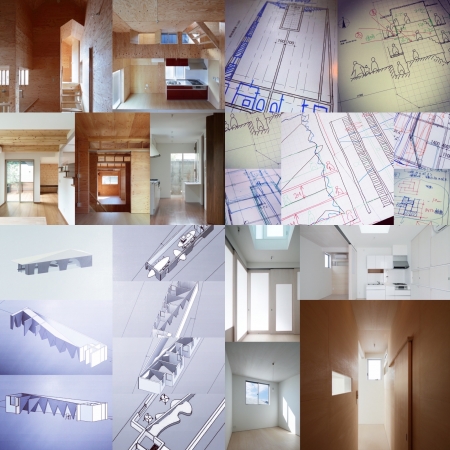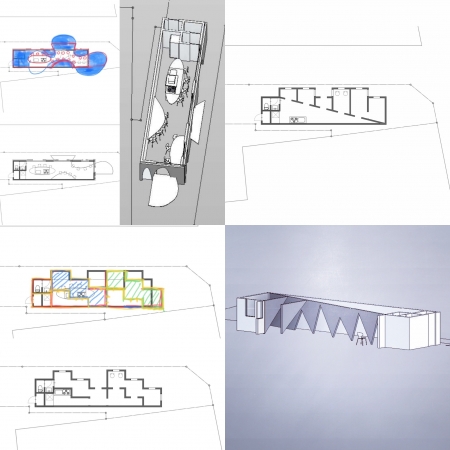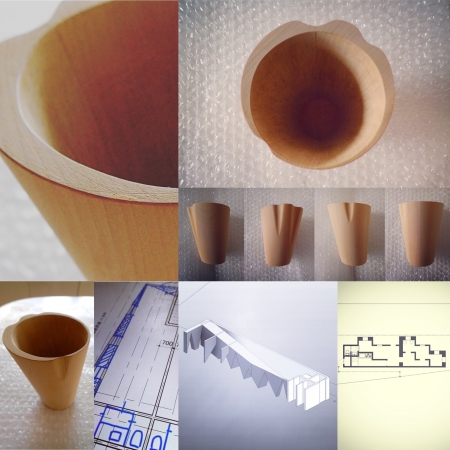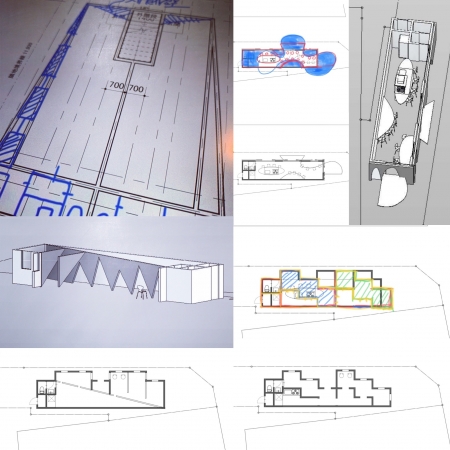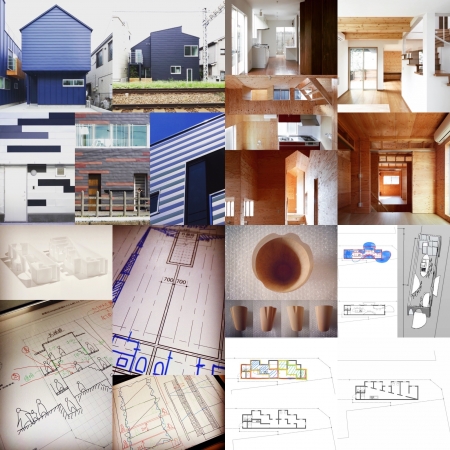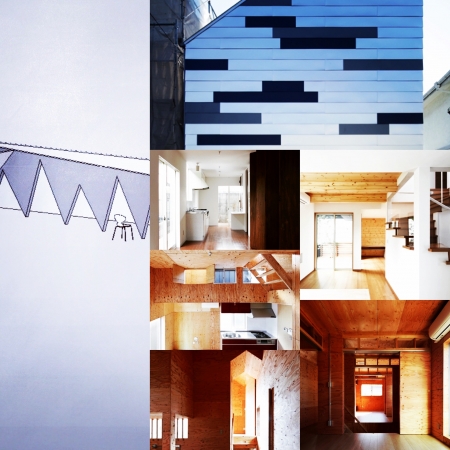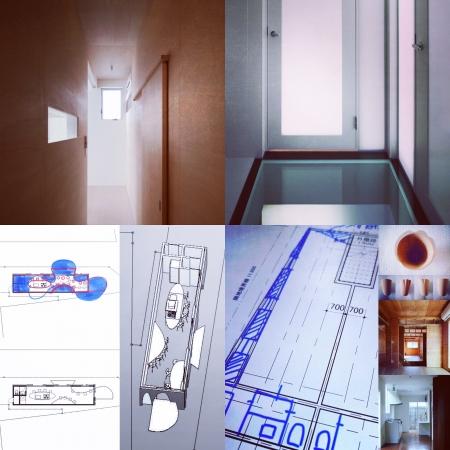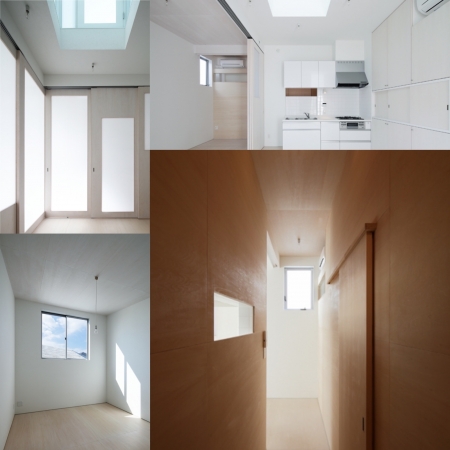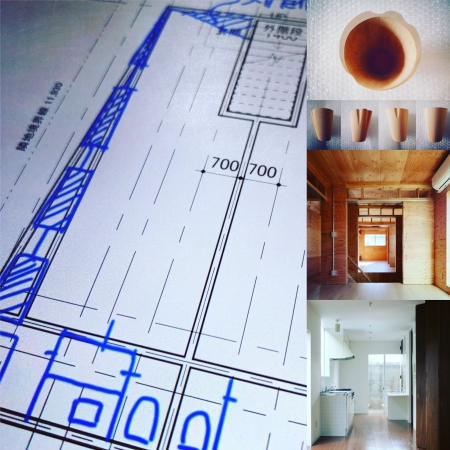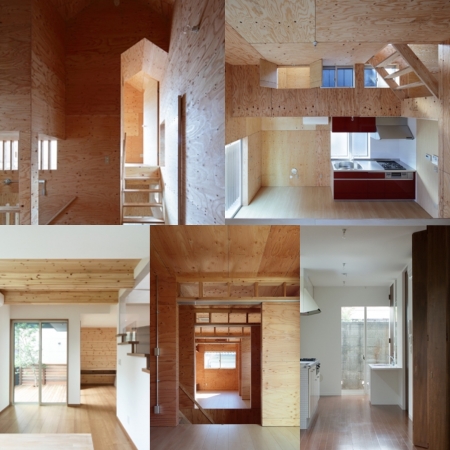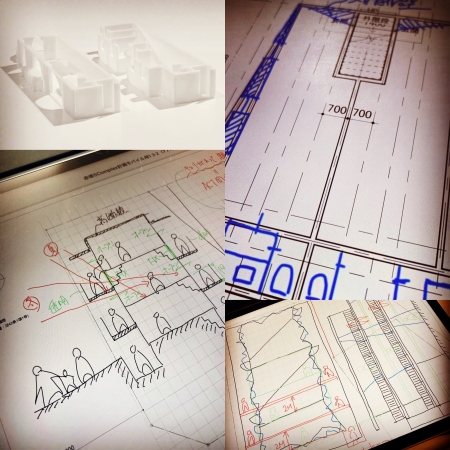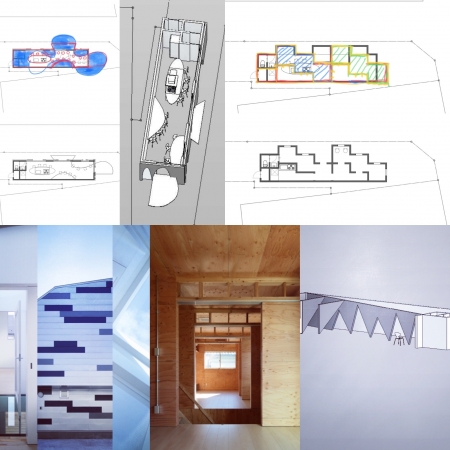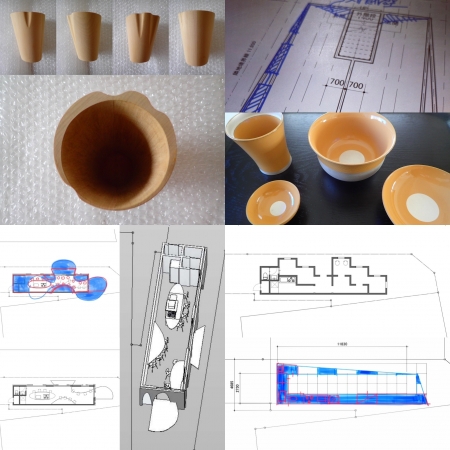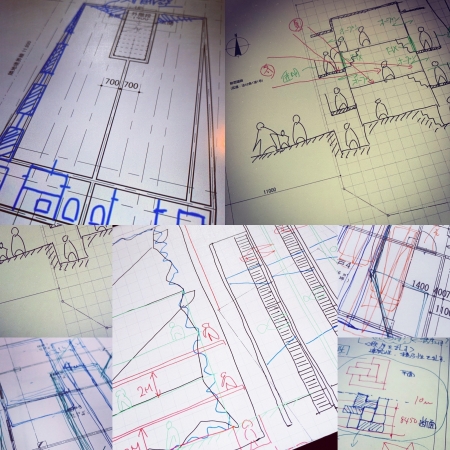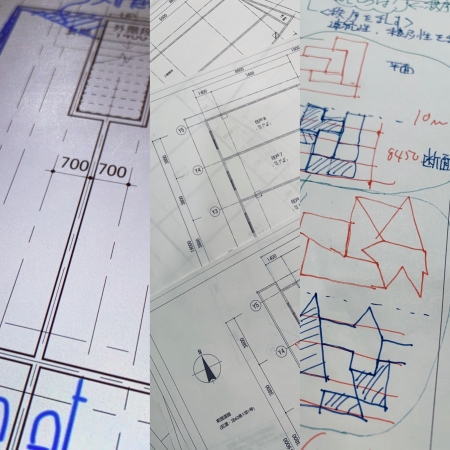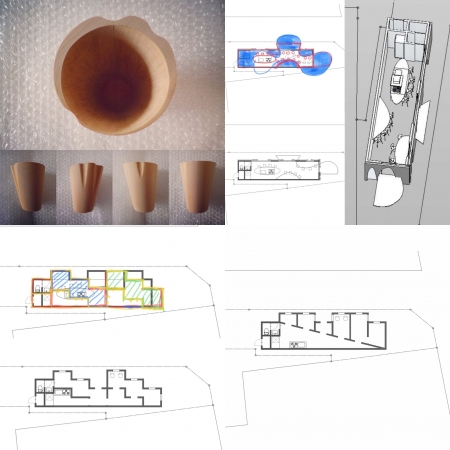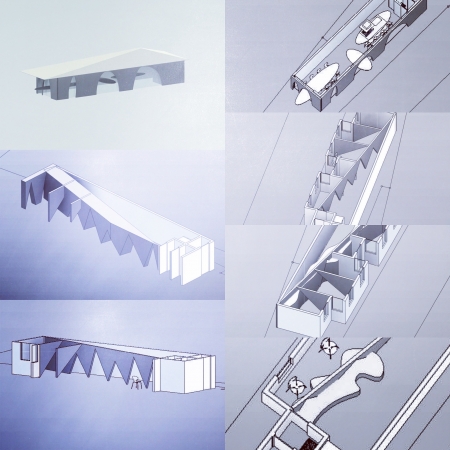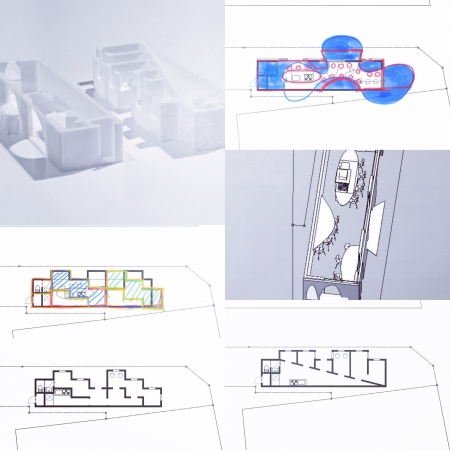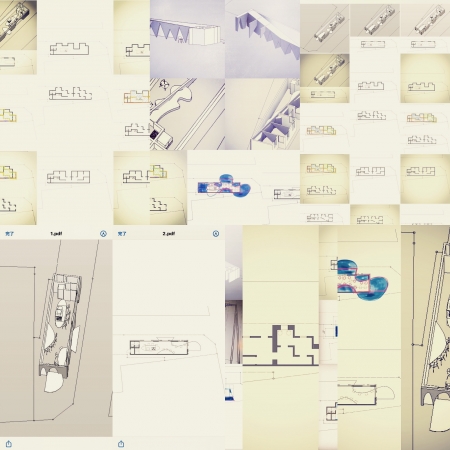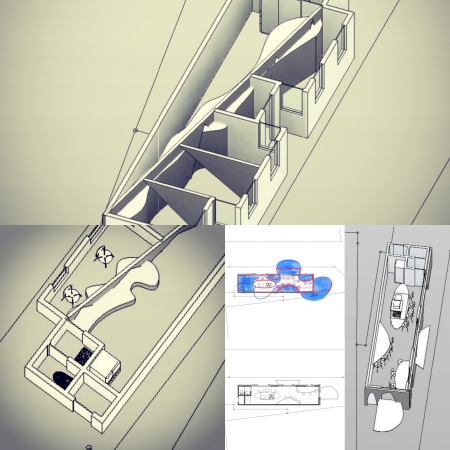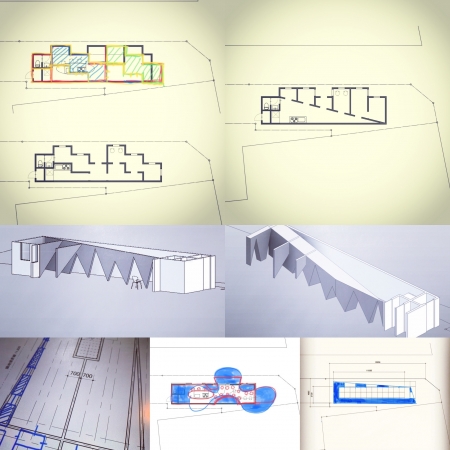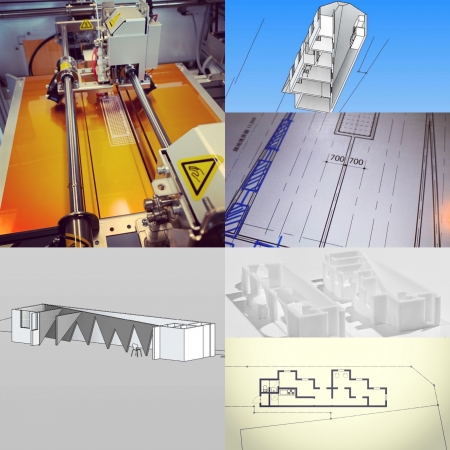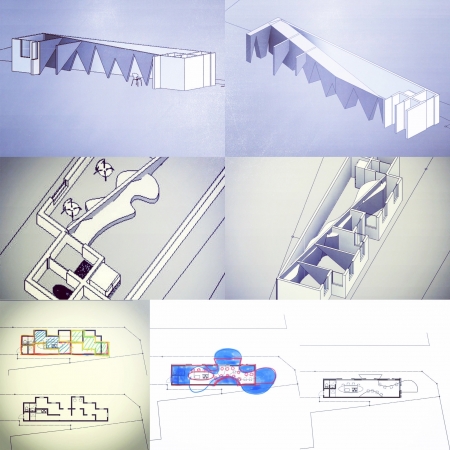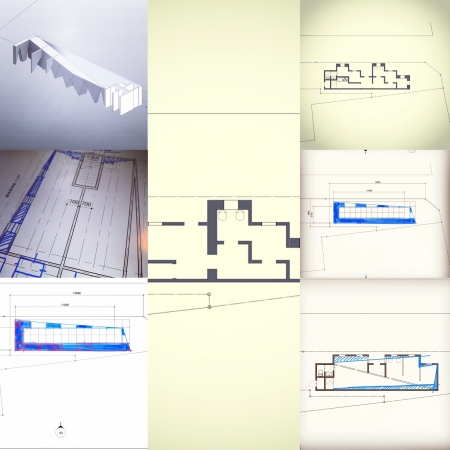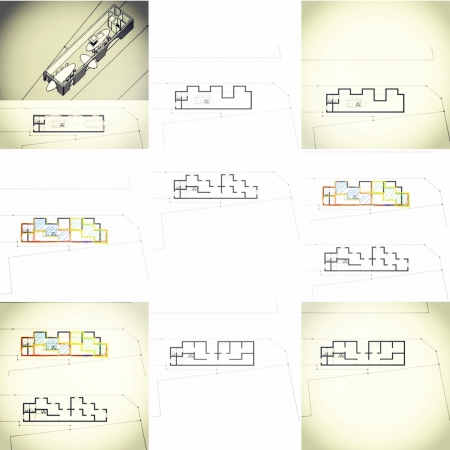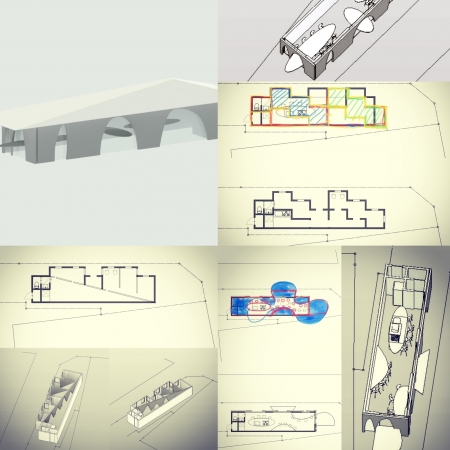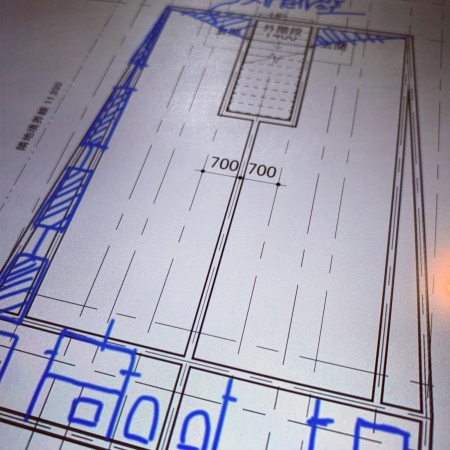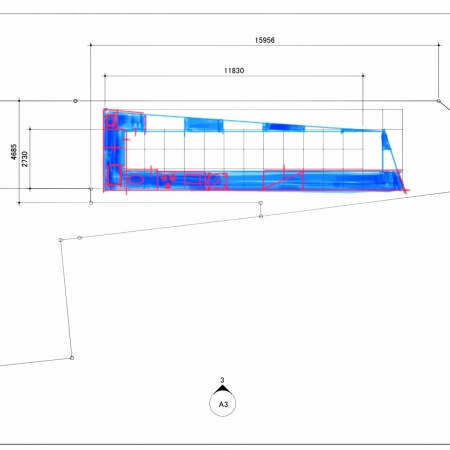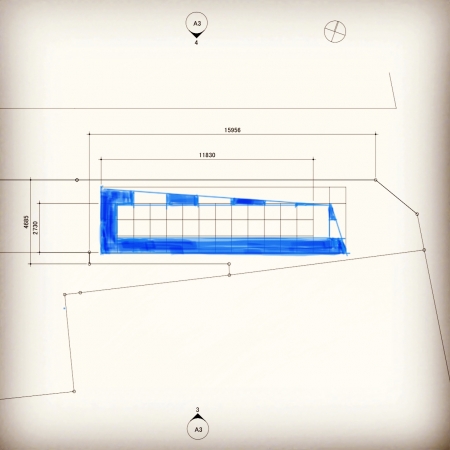感情や心の動きも物として、そうすると気分も物として 「気分という感情そのものを物とする」ことの解像度を上げて、もっと露わにして、実際に建築として、空間として表現することを試みる。
気分には元々の形、大きさ、重さはないが物だから、物として形や大きさや重さを表現することはできるが、そこに何か物にする要素を加えてあげないと実際に物として出現しないだろう。
そもそも物はある特定の条件のもとでしか表現できないし、成立しない。だから、物にするには条件を与えてやらないといけない。
例えば、以前、気分によって見え方が変わるフリーカップを考えてみた。それは不整形で飲み口の厚みが違う。その日の気分で飲み口を選ぶとフリーカップ自体の形も変化し、気分と呼応してフリーカップの見え方が決まる。だから、これは物としてフリーカップだが、これを物として「フリーカップという名の気分」ということもできるだろう。
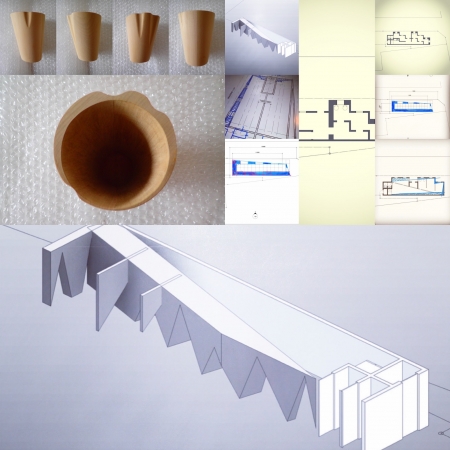
当然これは、物は言いようではない。なぜなら、物として気分を表現して実在しているから、言葉だけで終わっていないからである。
さて、これを建築や空間で行うことを考えていて、その表現の部位として「壁」を考えてはいるのだが、フリーカップとは違い、建築や空間自体は動かないから、人のアクティビティも結びつける必要がある。そうすると、気分という感情と物とアクティビティの3つをつなげるための何か条件を与える必要がある。
"Connecting mood, things and activities"
Emotions and movements of the mind are also objects, and then moods are also objects. We will raise the resolution of "taking the emotions of moods themselves" to make them more exposed, and try to actually express them as architecture and space.
The mood does not have the original shape, size, and weight, but since it is a thing, it is possible to express the shape, size, and weight as an object, but if you do not add something to it, it will actually be It will not appear as a thing.
In the first place, things can only be expressed under certain specific conditions, and they do not hold. Therefore, you have to give conditions to make things.
For example, I used to think of a free cup whose appearance changes depending on the mood. It is irregular and the thickness of the mouthpiece is different. If you choose a mouthpiece according to the mood of the day, the shape of the free cup itself will change, and the appearance of the free cup will be determined in response to your mood. So, this is a free cup as a thing, but you can also call it a "feeling called a free cup".
Of course, this is not something to say. This is because it expresses the mood as a thing and exists, so it does not end with words.
Well, I'm thinking of doing this in architecture and space, and I'm thinking of "walls" as a part of that expression, but unlike free cups, architecture and space itself do not move, so people's activities are also Need to tie. Then, it is necessary to give some condition to connect the feeling of mood, the thing and the activity.


